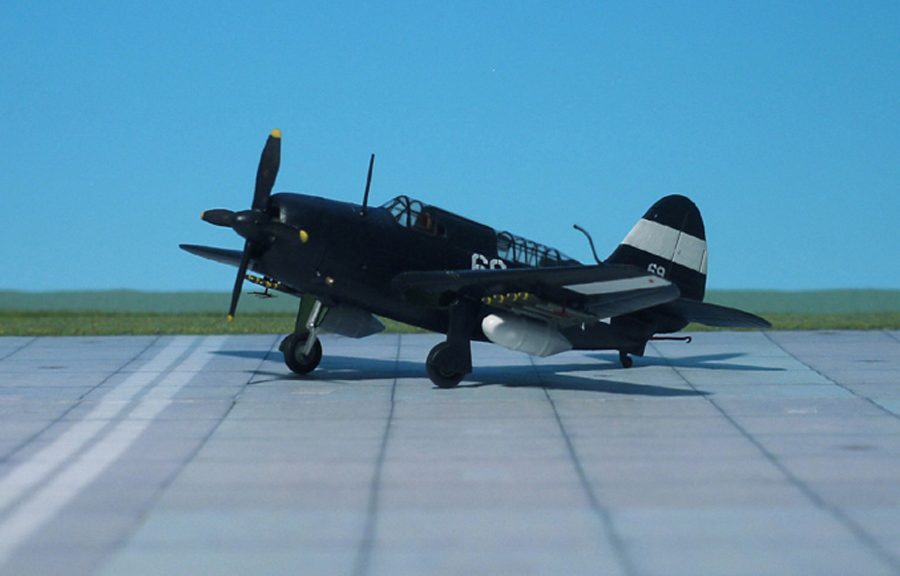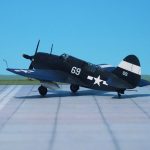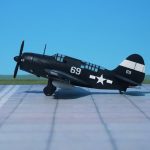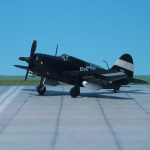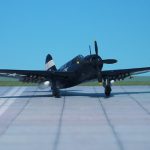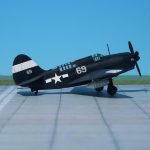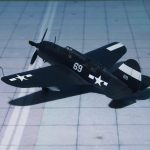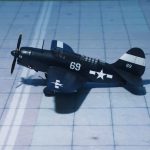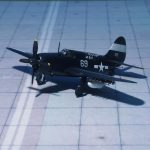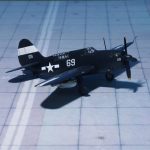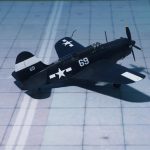TYPE: Carrier-based dive bomber
ACCOMMODATION: Pilot and radio operator/gunner
POWER PLANT: One Wright R-2600-20 “Twin Cyclone” radial engine, rated at 1,900 hp
PERFORMANCE: 295 mph at 16,700 ft
COMMENT: The Curtiss SB2C “Helldiver” was developed to replace the Douglas SBD “Dauntless”. It was a much larger aircraft, able to operate from the latest aircraft carriers and carry a considerable array of armament. It featured an internal bomb bay that reduced drag when carrying heavy ordnance. Saddled with demanding requirements set forth by both the U.S. Marines and United States Army Air Forces, the manufacturer incorporated features of a “multi-role” aircraft into the design.
The first prototype made its maiden flight on December 1940. It crashed on February 1941 when its engine failed on approach, but Curtiss was asked to rebuild it. The fuselage was lengthened and a larger tail was fitted, while an autopilot was fitted to help the poor stability. The revised prototype flew again on October 1941, but was destroyed when its wing failed during diving tests on December 1941.
Large-scale production had already been ordered on November 1940, but a large number of modifications were specified for the production model. Fin and rudder area were increased, fuel capacity was increased, self-sealing tanks were added and the fixed armament was doubled to four 12.7 mm machine guns in the wings, compared with the prototype’s two cowling guns. The SB2C-2 was built with larger fuel tanks, improving its range considerably.
The program suffered so many delays that the Grumman TBF “Avenger” entered service before the “Helldiver”, even though the “Avenger” had begun its development two years later. Nevertheless, production tempo accelerated with production at Columbus, Ohio and two Canadian factories.
The U.S. Navy would not accept the SB2C until 880 modifications to the design and the changes on the production line had been made, delaying the Curtiss “Helldiver’s” combat debut until November 1943. Among its major faults, the “Helldiver” was underpowered, had a shorter range than the Douglas SBD, was equipped with an unreliable electrical system, and was often poorly manufactured. The solution to these problems began with the introduction of the SB2C-3 beginning in 1944, which used the R-2600-20 Twin Cyclone engine with 1,900 hp and Curtiss’ four-bladed propeller. This substantially solved the chronic lack of power that had plagued the aircraft
In operational experience, it was found that the U.S. Navy’s Grumman F6F “Hellcat” and Vought F4U “Corsair” fighters were able to carry an equally heavy bomb load against ground targets and were vastly more capable of defending themselves against enemy fighters. The “Helldiver”, however, could still deliver ordnance with more precision against specific targets and its two-seat configuration permitted a second set of eyes. A “Helldiver” also has a significant advantage in range over a fighter while carrying a bombload, which is extremely important in naval operations.
The advent of air-to-ground rockets ensured that the SB2C-4 was the last purpose-built dive bomber produced. Rockets allowed precision attack against surface naval and land targets, while avoiding the stresses of near-vertical dives and the demanding performance requirements that they placed on dive bombers.
Crew nicknames for the aircraft included the “Big-Tailed Beast”, or just the derogatory “Beast” due to its size, weight, and reduced range compared to the SBD it replaced. A total of 7,140 Curtiss SB2C “Helldivers” were produced in World War II (Ref.: 24).
